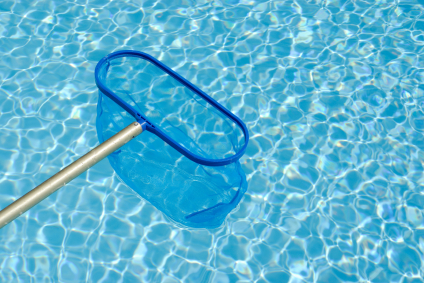Pool maintenance can be a full time job, especially if you let things get out of hand. Keeping a close watch on your pool’s pH level will help you to prevent bacteria and algae from spreading, but sometimes it’s too late for prevention, in which case, you’ll need some immediate remedies. If your pool is looking green and feels slimy to the touch, there’s a very good chance that you have an algae problem. There are a number of ways that algae can be removed from your swimming pool that don’t involve you wading through the slime with a scuba suit on.
Clean your filters. Checking to see if your filters are operating correctly and cleaning any blockages in your filtration system should be your first step when attempting to remove algae from your pool. If you don’t do this, you may as well quit while you’re ahead. Your pool’s filtration system is the first line of defense against algae and scum. So, before you do any kind of algae treatment, be sure that these filters are working at their full capacity.
Test the balance. Your pool’s pH balance determines whether it is healthy or not, and this needs to be tested on a regular basis. A healthy pool’s pH level will be somewhere between 7.2 and 7.8 on the pH meter. If it’s any lower than this, your pool is too acidic, and if it’s more than 7.8, then you’re likely to continue to have bad bacteria and algal blooms occur. So to ensure that the problem doesn’t reoccur again and again, be sure to get your pH level right. Basic pH kits can be purchased at any decent pool supply store, so head over to your local Royal Swimming Pools and pick one up immediately.
Try Algaecide. Algaecide is a chemical that you can add to your pool which will kill the living algae in your pool. It’s not a guaranteed quick fix, but it is a very effective method. You’ll have to leave it to work overnight and then be sure to thoroughly skim and vacuum the pool to ensure any dead or living bacteria and algae is gone for good – otherwise that yucky green slime will stick around. It’s a good idea to backwash and clean all the filters after this process to ensure that the filters don’t get blocked up with the dead algae. If the algae is still in existence after this process, a second dose of algaecide might be in order. Be sure to follow the label carefully, as all algaecides differ slightly.
Keep up with the upkeep. It’s very important as a pool owner to keep on top of your pool’s maintenance. It doesn’t take that much effort once things are back on track. Cleaning the filters on a daily basis to prevent blockage, measuring your pool’s pH every few days, and vacuuming the pool’s floor on a regular schedule will all help to keep your swimming pool crystal clear all year round.

